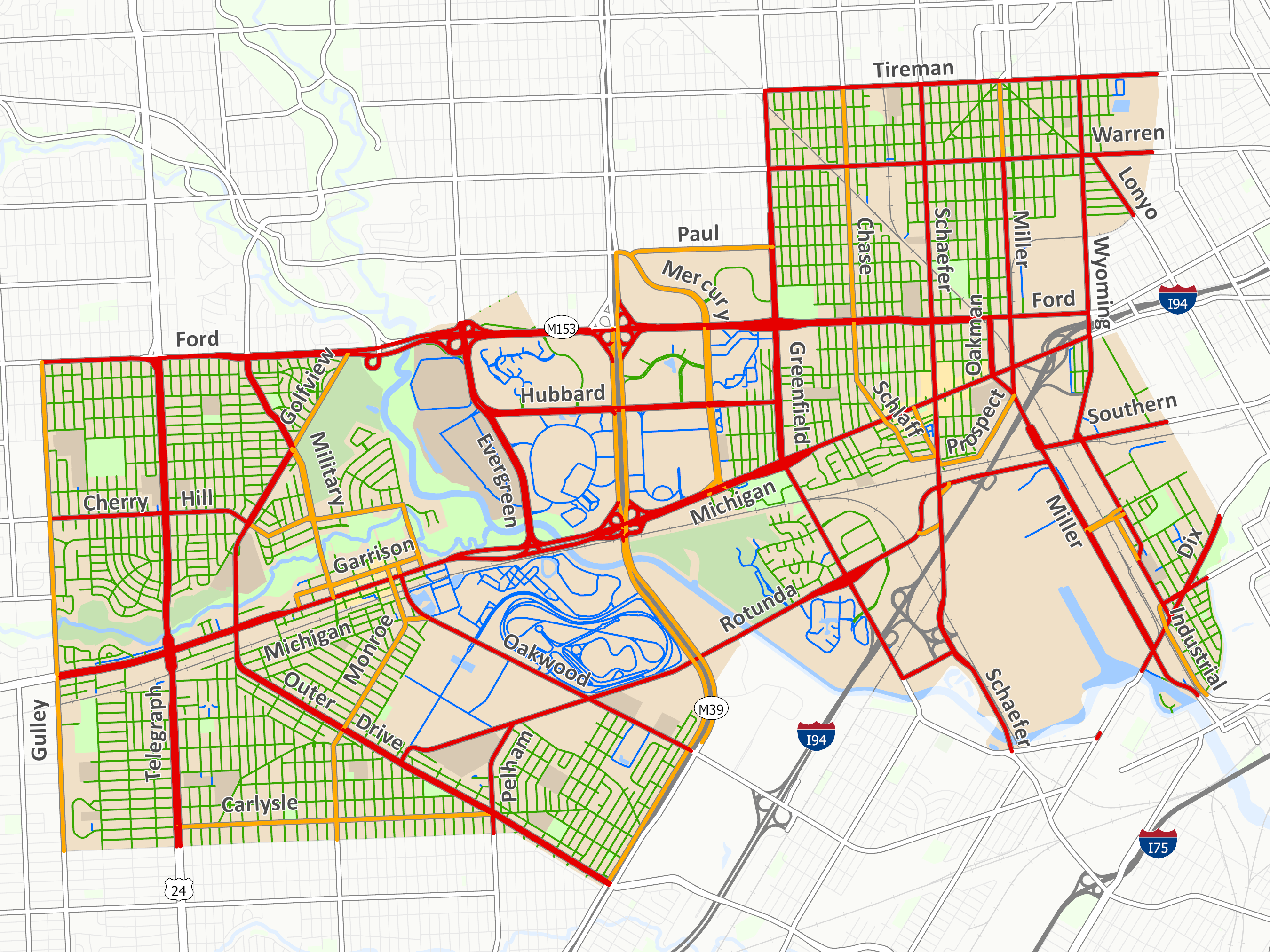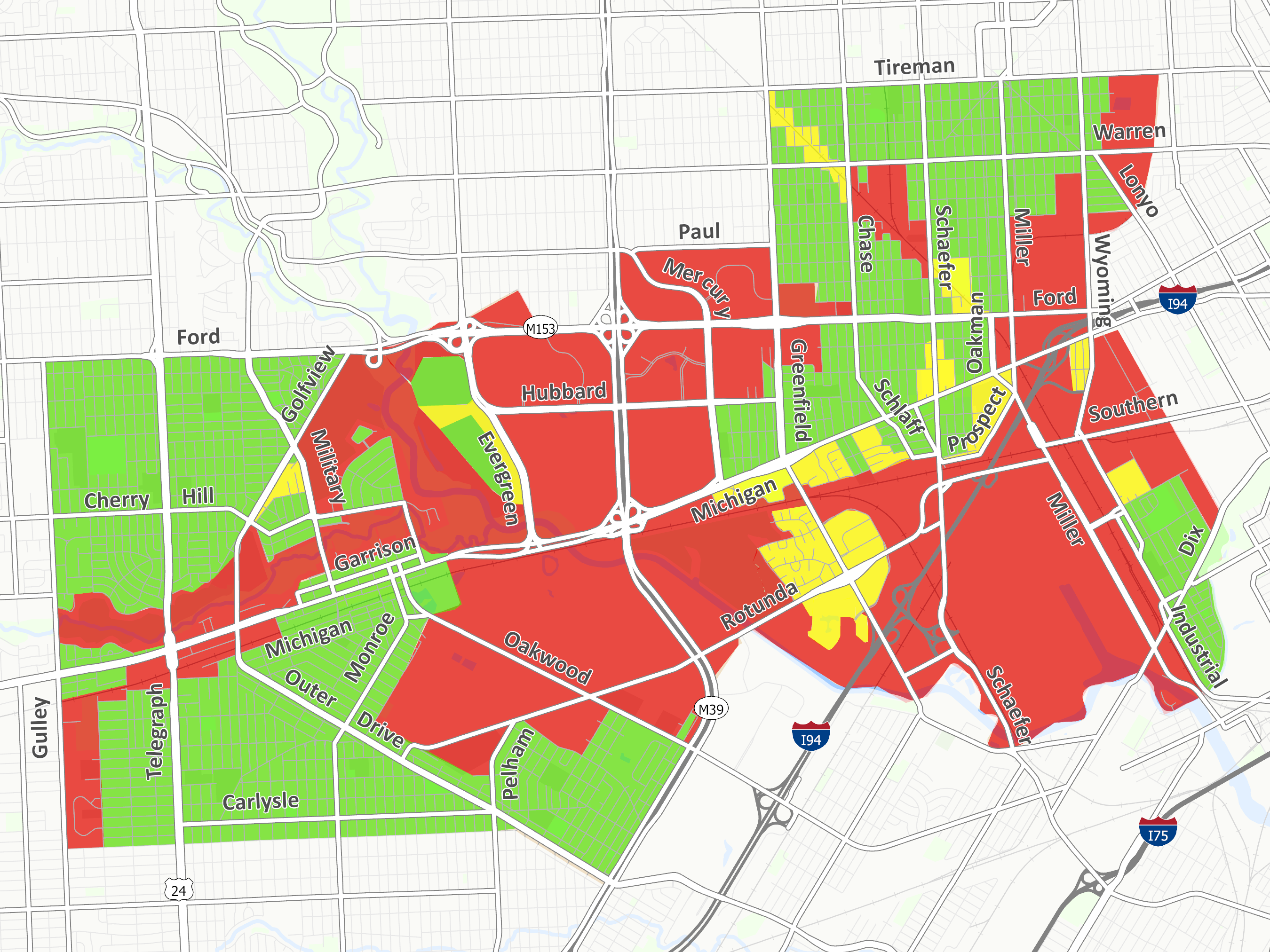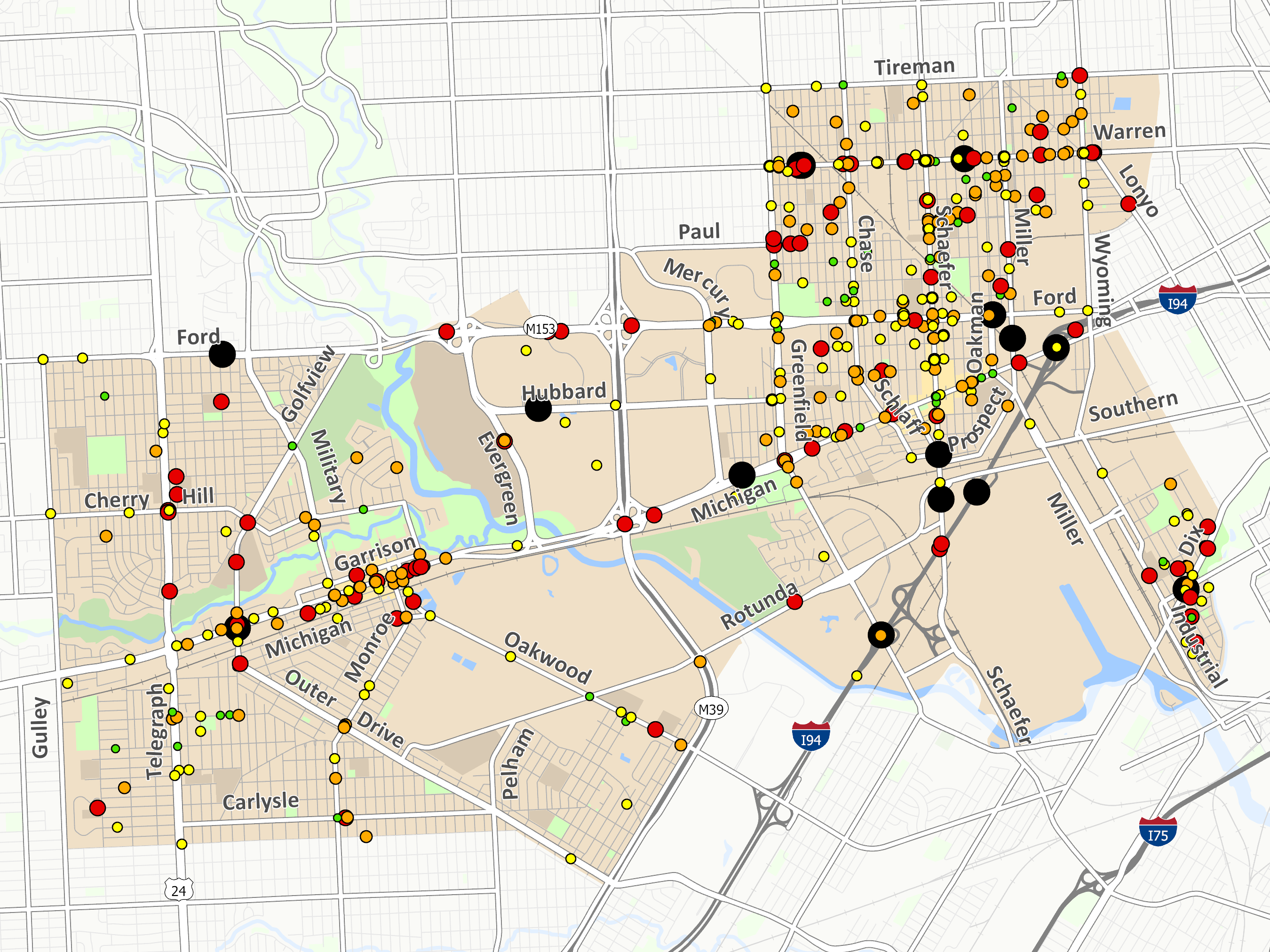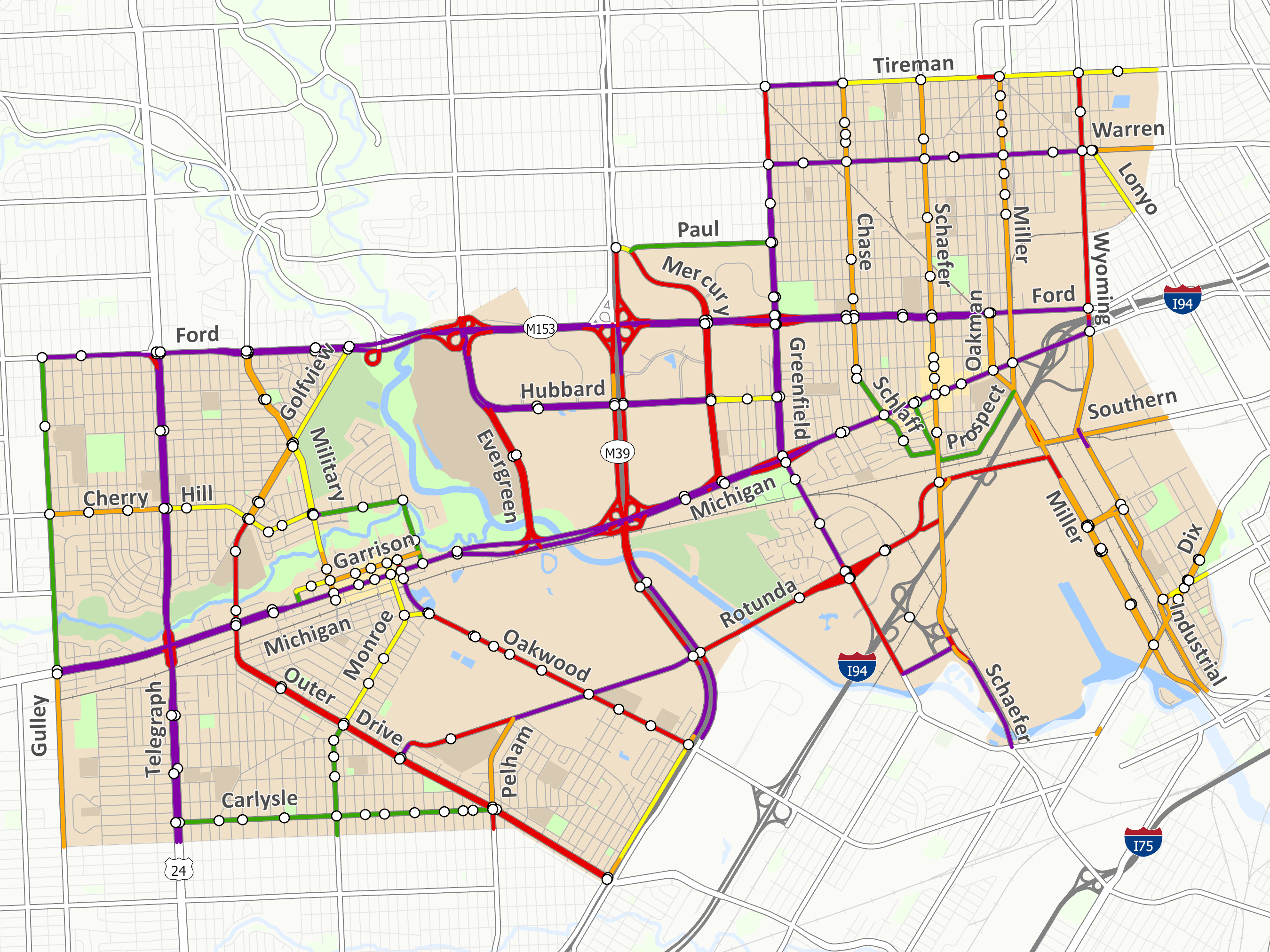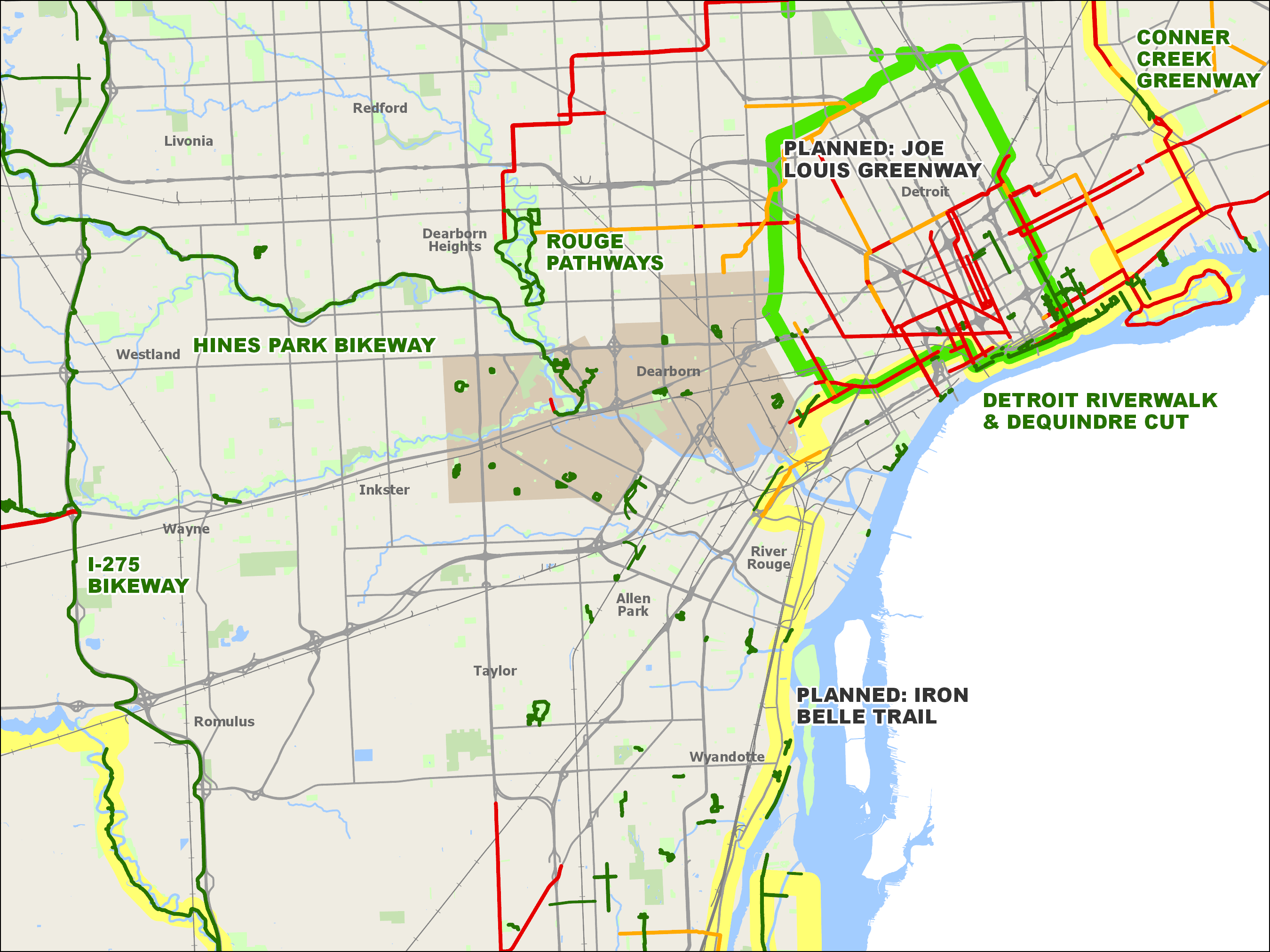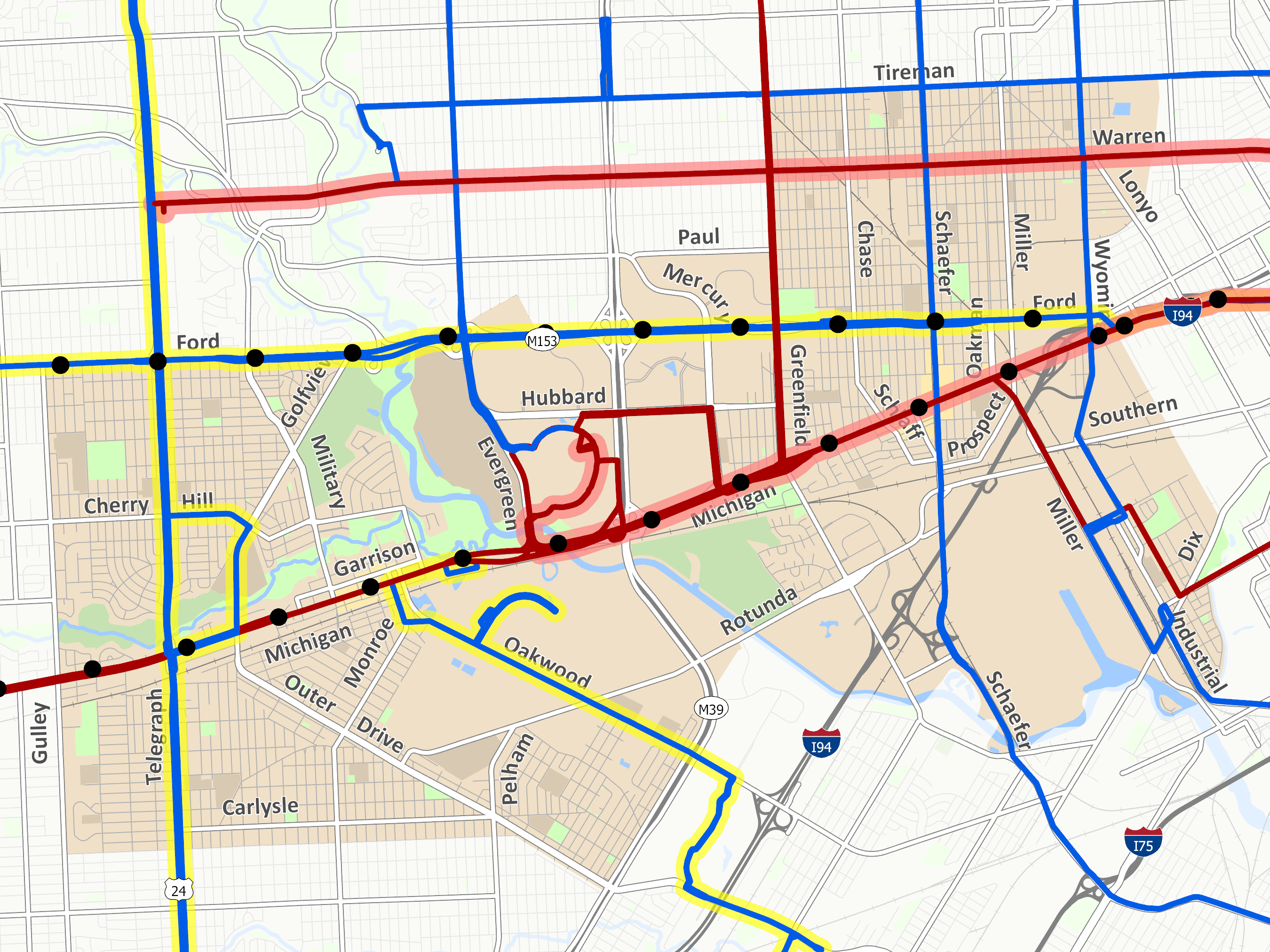Overview
- 135 linear miles of roadways
- 6 square mile of public right-of-way
- 24% of your entire City’s footprint
- There are functional and jurisdictional hierarchies of the roadway system
- The road system falls under three public agencies and a number of private agencies
- The City’s complete street resolution and state law require that local plans and concerns
be addressed - Traffic speed is the most significant factor in safety of all modes
- The Arterials were designed to move a lot of vehicles at a high rate of speed
- Higher speeds do not necessarily equate higher volumes
- Signalized intersections are the bottle necks, they can regulate speed and are the
primary determinant of capacity - Tremendous number of six or more lane boulevards: Ford, Telegraph, Michigan, Greenfield – these present unique opportunities and challenges.


